8 Great Stocking Stuffer Board Games for 2023
All promotional photos are supplied by game publishers. Games Lists board games
Just the other day, I received two new games, a review copy of Apiary from Stonemaier Games (publishers of Wingspan and Scythe) and my Kickstarter copy of Daybreak (from Pandemic designer Matt Leacock), and while I’m extremely excited to try them both out, I think the two of them combined to weigh over 12 pounds. These boxes are huge. There’s room for big games like that, sure, but I’m always on the lookout for a great small-box game, both for the lack of shelf space required and for the ingenuity needed to fit a great game into a tiny package. SCOUT is probably the best such example, as the box cover is smaller than a 3×5 index card and you can fit it in your jacket pocket—or in a holiday stocking. Some other older games that I love that come in tiny boxes include Ohanami, The Mind, Love Letter, Air Land & Sea, and Schotten Totten (Battle Line), any of which would also fit in the stockings we use in our family, at least. So with that in mind, here are the best stocking stuffer board games of 2023.
Splito
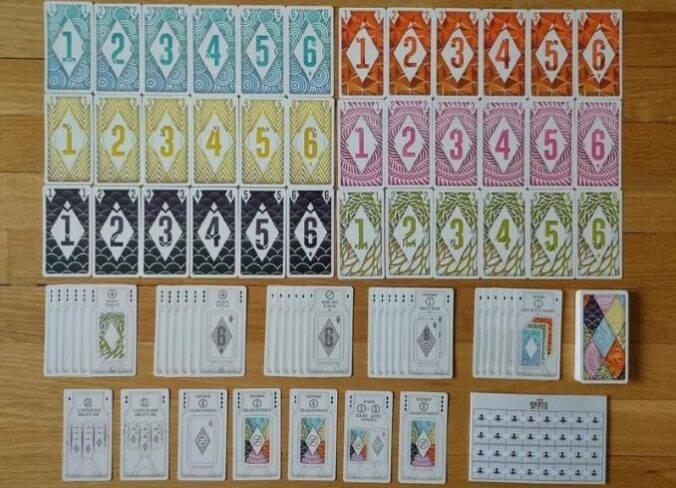
This is my Small Box Game of the Year, an award I absolutely did not just make up while writing this. It plays three to eight players, and it plays just as well with eight as any player count, with a party-game vibe but more strategy to it. The deck contains numbered cards and scoring cards, and you can play a scoring card to your left or to your right to score points with that neighboring player, making the game semi-cooperative. Otherwise, you must play a numbered card to your left or right on each turn, after which players pass their remaining hands around the table. There are also some scoring cards in the middle of the table available to everyone, and at game-end it’s every player for themselves—you score from your left and your right, and then score from the middle. I have actually played this with eight and the player who I would say likes board games the least of anyone in the group (sorry, Mom) ended up winning after about 15 minutes of a lot of crosstalk, taunting, and laughter. I’m a party-game skeptic, but this is my kind of game for a crowd.
Fika
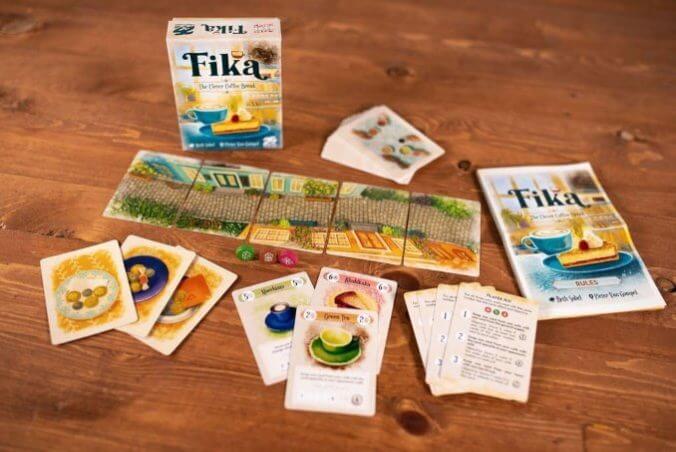
This tiny two-player game is a simple take-that contest set around the Swedish custom of fika, a coffee break built around socializing, rather than simply stopping work for caffeine consumption. The entire game comprises a deck of 18 cards numbered 1-6 in three suits, with each number bearing a unique power when you play it and a unique way of scoring. Those powers might let you move your own cards or your opponent’s, or switch cards around, or otherwise mess with the order of things. When one player plays their fifth card, the other has two more turns to play cards, after which you score. You play a best of three, but even so the game can take as little as 10 minutes.
Sail
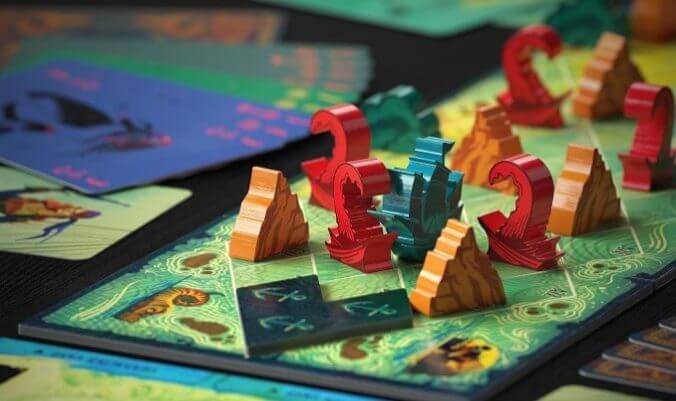
A truly wonderful and very, very difficult two-player cooperative game, which is itself a retheming and translation of a Japanese game called Hameln Cave. Sail is a trick-taking game with a deck of 27 cards in three suits where players are trying to advance their ship to its destination through islands, past storms, and without taking too much damage from the Kraken. The player who won the last trick leads, and the other player must follow suit if possible, with no communication during rounds. Cards have action symbols on them, and certain pairs of symbols have effects on the board—moving the ship, taking damage from the Kraken, doing damage to the Kraken (which undoes some of the former by removing the worst cards from the deck), and so on. The game comes with a half-dozen scenarios of increasing difficulty, and when my father—a retired electrical engineer and longtime bridge player—and I did manage to win a scenario, it was always by the skin of our teeth, where the next move would have sunk the ship. If you don’t mind the stress, it’s fantastic, and makes a great stocking stuffer board game.
Deduckto
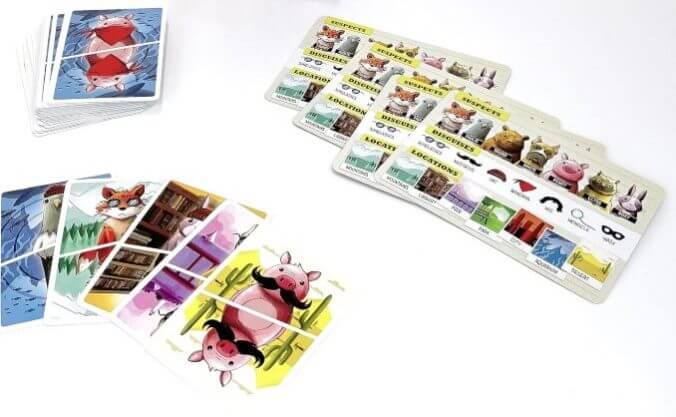
The best game for kids on this list, Deduckto is, as you may have deduced, a deduction game. Each player has one card in their hand, the Suspect, that only other players can see, and on a turn, the player holds up another card from their hand and asks if that card has anything—the suspect, the disguise, or the location—in common with their Suspect card. The first player to accurately guess all three of those facts about their Suspect wins. Every time I’ve played this, all players have figured it out within one turn of each other, so barring exceptional luck it’s not a game one player, like the adult at the table, can just run away with, and my then six-year-old had no problem playing either.
Romi Rami
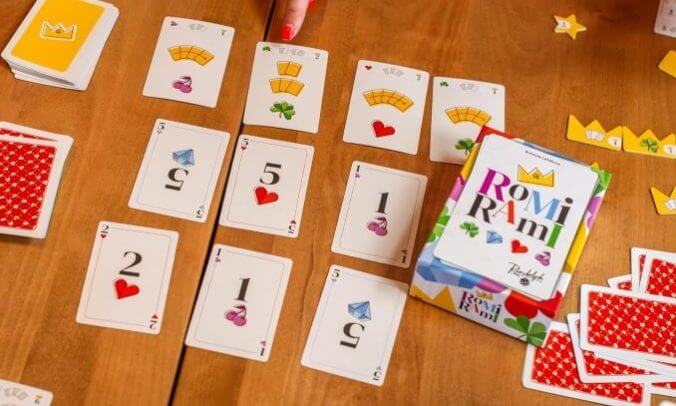
A better twist on rummy, a game I liked as a kid and now generally find annoying, which I admit I think is true of most games played with a traditional deck of cards, because they are just so luck-driven. Players in Romi Rami try to complete simple contracts by collecting sets or runs of cards by number or color, then claiming the contract they want before anyone else can, after which a new one appears in the same space. There are also trophies you can claim for certain collections, also changing from game to game, so you avoid the staleness of (gin) rummy and its ilk. The similarity to those games gives this a very low barrier to entry, but it gives them a fresh coat of paint they desperately need.
Yokai Sketch
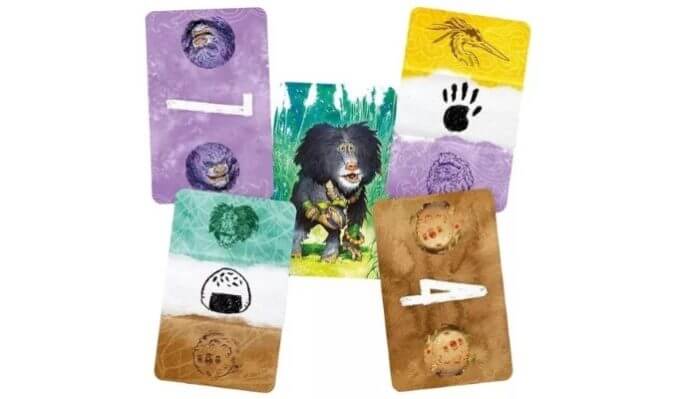
Just a beautiful and very simple game of set collection for two players, based on the supernatural creatures of Japanese folklore known as yokai, although the game itself is mostly about matching colors. There are four stacks of different-colored yokai cards in a row between the players, with point values in the stack. Players then get hands of three cards, each of which shows two different yokai colors, playing one each turn to a specific yokai’s column. When the number of matching cards on both sides of a yokai meets or exceeds the number shown on the top card in the stack, the player with more cards on their side claims the yokai card and the points. Some cards also have powers to let you move a yokai or move your opponent’s card to another yokai’s column. I just glimpsed this on a table at Gen Con and had to have it for the art and the light take-that gameplay.
Sea Salt & Paper
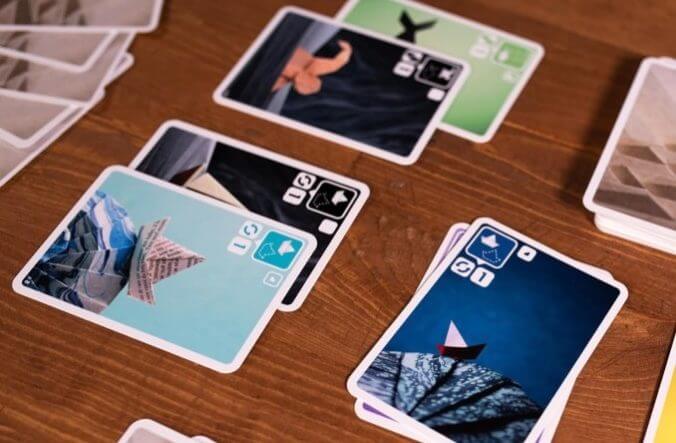
I’m the low man on this game, as I found it a bit too luck-driven for my tastes, but I also acknowledge that this is one of the breakout hits of the year. Players will take or play cards from their hands, with many cards offering some sort of bonus power, while each card type has its own scoring method—mostly relating to other cards you’ve played. The big twist here is that any player can decide to end the round if they think they have the most points, but since points are hidden there’s always a chance they’ve called it too soon. It is very cute, and comes from two fantastic designers in Bruno Cathala and Theo Rivière. I just found it a little frustrating that you might try to make a set and never see any of the cards you’d need to complete it.
Point City
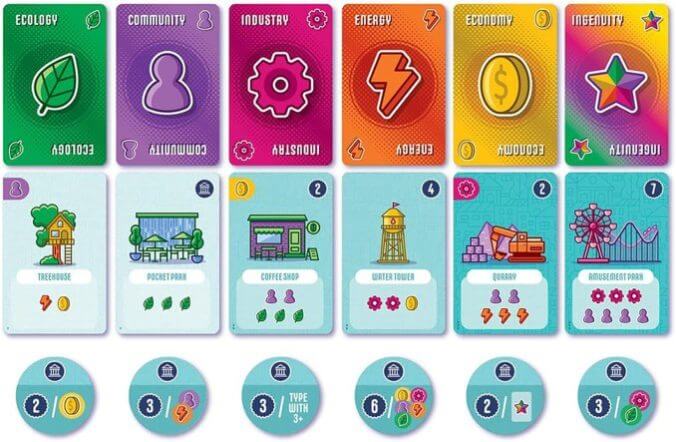
I might be stretching the definition of “stocking stuffer” here, as this box probably won’t fit in a stocking unless you’re built like Hagrid. (No offense if you are.) This sequel to the wonderful 2019 game Point Salad has a similar mechanic in how you take cards, but the way the cards work is just a shade more complicated. Cards are double-sided, with resources on one side and buildings on the other. You take two cards on every turn, but can only take a card with its building side up if you have the resources to pay for it. Buildings give you points, so they’re the goal, and some offer permanent resources like cards do in Splendor. You can also gain civic tokens for further bonuses. Regardless of player count, each player will get 17 turns, as the game ends when the Market, a grid of 4×4 cards, can’t be refilled. It’s Point Salad Plus, and I say that as a compliment.
A few more notes on stocking stuffer board games: I liked what I saw of Big Top, another game from the same publisher as Sail (Allplay), at Gen Con this year, but haven’t played it in full yet… Knarr, from Bombyx, was on this list, but Pandasaurus just announced that they have the U.S. distribution rights and will be releasing the game in February. So it’s a great Valentine’s Day stocking stuffer instead!
Keith Law is the author of The Inside Game and Smart Baseball and a senior baseball writer for The Athletic. You can find his personal blog the dish, covering games, literature, and more, at meadowparty.com/blog.